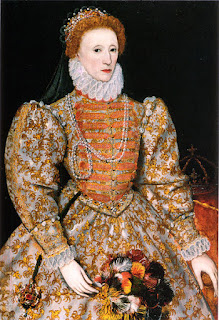These are 3 Chinese gods of good luck. The middle god has a strange looking head. This head is similar to some of the strange skulls found in Egypt and Peru and America. As I mentioned in my article regarding my visit to Arkansas, these strange elongated skulls were found in some of the AmeriIndian mounds. The strange shape was also found in Egypt and Peru.
According to wikipedia:
"Fu Lu Shou (simplified Chinese: 福禄寿; traditional Chinese: 福祿壽; pinyin: Fú Lù Shòu) is the concept of Good Fortune (Fu), Prosperity (Lu), and Longevity (Shou). This Taoist concept is thought to date back to the Ming Dynasty[1], when the Fu Star, Lu Star and Shou Star were considered to be personified deities of these attributes respectively. The term is commonly used in Chinese culture to denote the three attributes of a good life. Statues of these three gods are found in nearly every Chinese home and many Chinese-owned shops on small altars with a glass of water, an orange or other auspicious offerings, especially during Chinese New Year. Traditionally, they are arranged right to left (so Fu is on the right of the viewer, Lu in the middle, and Shou on the far left)."
Here is my photo from the mound in Arkansas:
Here is my photo of a statue of an ancient Egyptian from the Chicago Oriental Institute:
Now here is a picture of a normal looking skull:
There was a practice of head binding done in the Americas, but I don't know of any evidence of it being done in Egypt.
There are also strange coincidences between these shapes of skulls and European royalty. Robert the Bruce was a Scottish King who was said to have an above average skull size and it was theorized that he was thus more intelligent.
From an online article in ScienceDirect:
"An estimate of someone's IQ is a potentially informative personal datum. This study examines the association between external skull measurements and IQ scores, and uses the resulting regression equation to provide an estimate of the IQ of King Robert I of Scotland (Robert Bruce, 1274–1329). Participants were 48 relatively healthy Caucasian men (age 71–76 years) resident in Scotland. Using magnetic resonance imaging data, intracranial volume estimated from external skull length and width correlated greater than .5 (p < .001) with measured intracranial area, which correlates very highly with brain volume. IQ scores estimated from the National Adult Reading Test (NART) correlated .56 (p < .001) with measured intracranial area, and .49 (p < .01) with estimated intracranial volume based on external skull width and length. The partial correlation coefficient of this latter association was .25 (p = .09) after adjustment for measured intracranial area. Thus, actual intracranial area accounts for about 74% of the variance shared by NART and estimated intracranial volume. A cast of the skull of Robert Bruce was measured and its intracranial volume estimated. A regression equation between IQ and estimated intracranial volume, based on data from the 48 subjects, estimated the IQ of Robert Bruce at about 128 (95% confidence interval 106 to ≫ 130), i.e. almost two standard deviations above the mean. NART scores show a ceiling effect, so this estimated IQ might be an underestimate. Robert Bruce's estimated high IQ is congruent with his military, political and other intellectual achievements."
Many other portraits show a strange skull shape for other royalty as well:
What is abundantly clear is that the ancient royalty of the past had a very different physical appearance which included a head shape that was elongated and with a larger brain capacity. The ancient MesoAmericans used head binding to replicate this natural head shape as an indication of nobility. Who were these people? Why were they physically different than the average human?
Are these royal or noble bloodlines from the ancient giants/titans that were talked about in mythology? Perhaps this is why they marry their own bloodlines, but it appears their brain capacity is decreasing as their height is. I try and trace this mystery in my book series, The Library Kids, and I have a surprising answer at the end of the series.
by Rita Jean Moran (www.thelibrarykids.com)
Sources:
http://en.wikipedia.org/wiki/Fu_Lu_Shou
http://en.wikipedia.org/wiki/Human_skull
http://en.wikipedia.org/wiki/Robert_the_Bruce
http://www.sciencedirect.com/science/article/pii/S0160289607000670
http://en.wikipedia.org/wiki/Artificial_cranial_deformation
http://en.wikipedia.org/wiki/Portrait_of_Princess_(Pisanello)









No comments:
Post a Comment